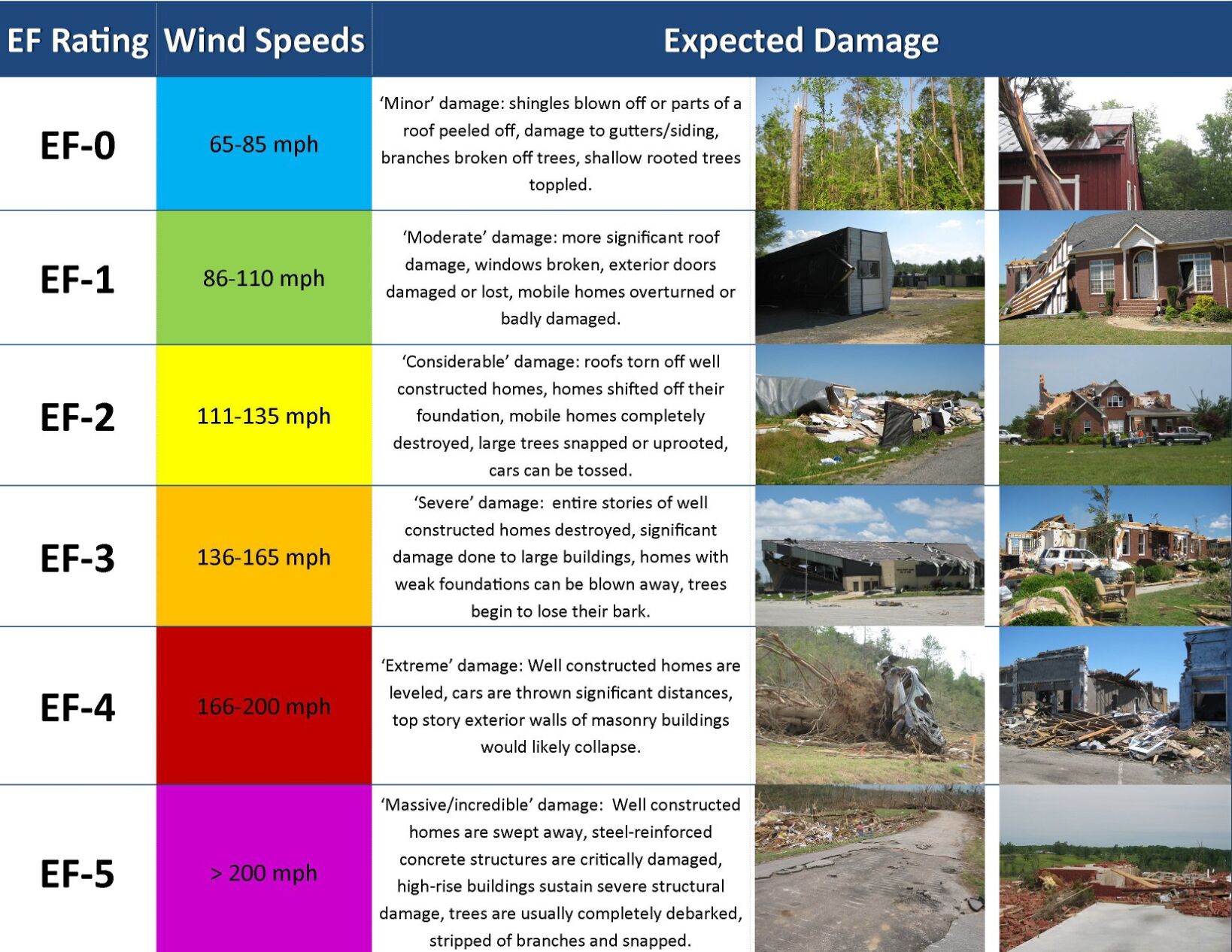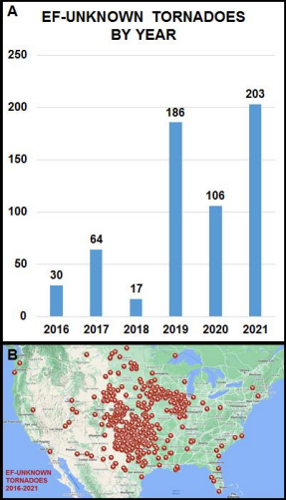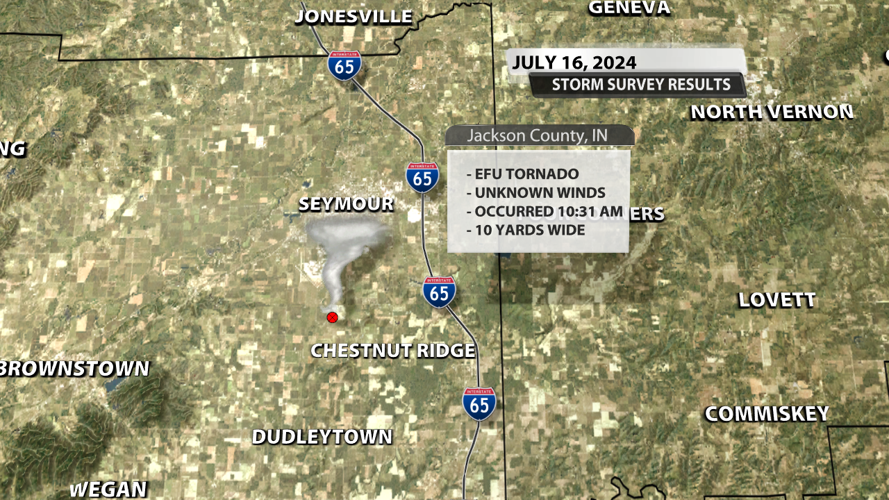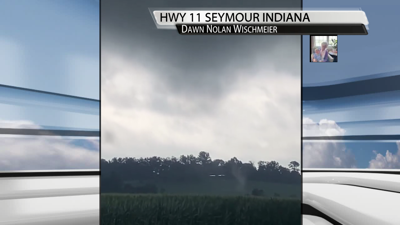You're all familiar with the Enhanced Fujita Scale or EF Scale, which became operational on February 1, 2007, is used to assign a tornado a 'rating' based on estimated wind speeds and related damage. When tornado-related damage is surveyed, it is compared to a list of Damage Indicators (DIs) and Degrees of Damage (DoD) which help estimate better the range of wind speeds the tornado likely produced. From that, a rating (from EF0 to EF5) is assigned.

Image Credit: NOAA
At 10:31 AM on Wednesday, July 16th a tornado did touch down, based on video evidence, in Jackson county of Indiana. It was 10 yards wide moving right along Highway 11 near Seymour, but the wind speed is unknown due to the lack of damage. Here's where the rating category EF-unknown (EF-U) comes into play. It is intended for tornadoes without known damage, so remote as to be inaccessible for surveying, and/or damaging only nonstandard indicators to which a rating cannot be applied.

According to an article from NOAA, (8.3B ERRORS, ODDITIES and ARTIFACTS in U.S. TORNADO DATA, 1995–2021) this category has been concentrated strongly in the central and southern Plains States, as well as Iowa and Illinois (Fig. 5).

Figure 5: EF-unknown (EFU) tornadoes as: a) bar chart by year, since initial use in 2016, and b) mapped over the CONUS. Background map courtesy Google.
"Those are areas of relatively high climatological tornado frequency, open land and low density of EF damage indicators. Since state segments already are filtered, the total EFU count of 606 (8.1% of all tornadoes in the same years) does not include an EFU state segment on 15 December 2021, for which the whole tornado path earned a numeric rating (thanks to another state segment rated EF0). Perhaps the most anomalous EFU path is the longest one: a 23.2-mi (37.4-km) long, 40-yd (36.6- m) wide entry in Wyoming on 12 June 2017. An EFU in northeastern California, on 15 August 2020, had an unusually precise max width of 156 yd (143 m). The mean path length and width for EFUs were 1.2 mi (2 km) and 51 yd (47 m), respectively."













